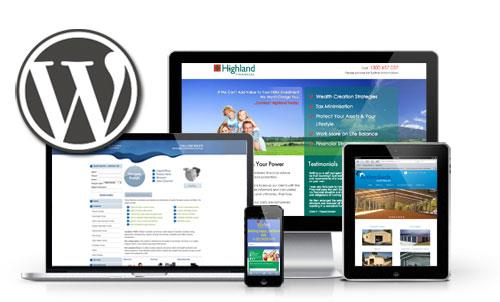|
|

|
|

What Your Clients Need to Know About Their WordPress Site |
|
By
Piyush Vekariya
30.8.2017
Phone:8866698094
Mail Now
|
Developers, take a moment to remember a recent WordPress project that you completed. Think about the interesting challenges you faced (and overcame). You may have even picked up some new skills in the process. Now, think about the satisfaction of delivering that project to your appreciative client. Pretty sweet, eh?
Let’s fast-forward a month or so after that project was delivered all shiny and new. You take a look at the site and find that the client made some changes that you might not have anticipated. Worse yet, there are a dozen plugins that need updated (not to mention a security fix for the WordPress core). Things unraveled pretty quickly. So, what could have been done better to prevent these issues?

BECOME A TEACHER
One of the best things we can do for our clients (along with our sanity and ego) is to educate them about their website. Depending on your business model, you may or may not be in the loop for the long-term. If not, then your clients need to realize that they simply can’t afford to ignore their website for months at a time.
Here are some key items to educate your clients on after you’ve handed off a WordPress website:
1. UPDATE, UPDATE, UPDATE
If anything, WordPress seems to be adding more bug fixes, security patches and features than most of us can keep up with. With the increasing number of security vulnerabilities and exploits out there, having an out-of-date install is not a good option.
You must inform your client that their site needs to be updated on a regular schedule (at least once a month)
in order to keep things secure. If they don’t have anyone in their organization willing or able to do this, you might want to ask for a monthly maintenance fee or recommend someone who can manage software updates for them.
2. THE RIGHT WAY TO CHANGE CONTENT
Nothing turns a beautiful website into a mess faster than a misinformed client trying to make changes. Sins such as putting too much text in an excerpt field (or not using the excerpt field at all), posting huge images in tiny spots or poor text formatting can break a layout and break your heart.
Of course, as designers and developers we need to do everything possible to
build sites so that these kinds of issues are avoided. But even then, damage can
still be done.
Show your clients the right way to make changes or add new content. This can be
done through documentation, an in-person meeting or even via a screen sharing
session/webinar. If you’re using custom fields, document them with clear
instructions. You’ll want to leave no doubt in the client’s mind about what they
are supposed to do.
3. EMPHASIZE THE COST OF PLUGINS
We’re not just talking about commercial plugins, here. Although you should let your client know of any recurring licensing fees (if applicable) and why it’s important to make those yearly renewals.
Beyond plugins that we pay cash for, there is a cost to free plugins as well. An adventurous client may head over to the Plugin Directory and start collecting new plugins at an alarming rate. That can lead to both security and functionality problems.
When you hand over that new website, explain that the client adds plugins at their own risk and to consult with someone (if not you) before adding anything. Setting up Editor or Contributor accounts for the client’s employees can also help ensure that not just anyone has access to install new things.
4. KNOW WHO TO CALL
Many of us have run into clients with existing websites who simply do not know
who their hosting or domain provider is. If you’re not the one managing those
services for your client, make sure to provide them some form of documentation
so that they have access to them. When the server is down at 3:00 AM, you’ll be
happy the client called the hosting provider instead of you!
5. SHARE YOUR SUPPORT POLICY
This will vary, based on your individual business. Some developers don’t mind helping out after the site is launched and others release it into the wild. Either way, it’s always a good idea to let your clients know the types of issues you can or cannot handle for them and the costs involved.
BACK IN THE DAY, IT WAS EASIER
In the days of static HTML sites, you could (theoretically) have a maintenance-free setup. Well, provided that content didn’t need to change. That was a whole other challenge…
With the use of powerful content management systems like WordPress, we simply cannot “set it and forget it”. Informing and educating clients about their website is vital to ensuring the long-term success of the site.
For developers, the benefits can be monetary (in that you can build this service into your pricing model) and bring peace of mind (seeing that the site hasn’t fallen apart since you handed it off). Plus, you may find that in educating your clients, you might gain some knowledge that can make you even better at your job.